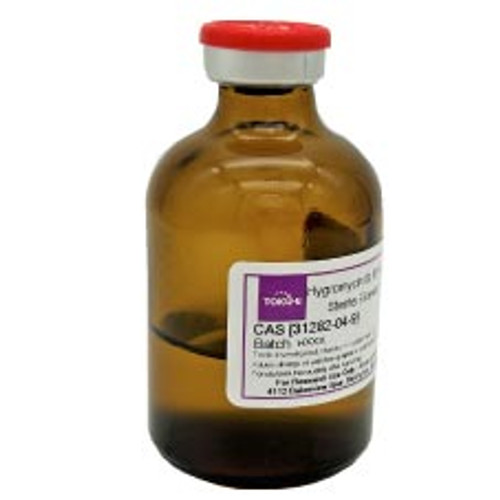Timentin ReadyMade™ Solution is provided as a sterile-filtered solution of Timentin (syn: Ticarcillin Disodium with Clavulanate Potassium 15:1) formulated in water at a concentration of 100 mg/ml. It has been filter sterilized using a 0.22 μm).
Timentin is an extended-spectrum (4th generation) β-lactam in the carboxypenicillin family that acts as a cell wall synthesis inhibitor. Ticarcillin has bactericidal activity against many Gram-positive and Gram-negative bacteria, particularly Pseudomonas aeruginosa. As a β-lactam antibiotic, Ticarcillin is susceptible to β-lactamase degradation. When combined with Clavulanate Potassium, a β-lactamase inhibitor, Ticarcillin's antibacterial activity is greatly increased. Clavulanic acid is effective against organisms expressing class A β-lactamases (including CTX-M and the ESBL derivatives of TEM-1, TEM-2, and SHV-1) and are generally less effective against class B, C, and D β-lactamases.
| Mechanism of Action |
β-lactams, like Ticarcillin Disodium, USP, interfere with PBP (penicillin binding protein) activity involved in the final phase of peptidoglycan synthesis. PBP’s are enzymes which catalyze a pentaglycine crosslink between alanine and lysine residues providing additional strength to the cell wall. Without a pentaglycine crosslink, the integrity of the cell wall is severely compromised and ultimately leads to cell lysis and death. Resistance to β-lactams is commonly due to cells containing plasmid encoded β-lactamases. Clavulanic acid is a “suicide” or “mechanism based” β-lactamase inhibitor. Clavulanic acid contains a β-lactam ring that binds strongly to β-lactamase at or near its activation site, thereby permanently inhibiting enzymatic activity. This action protects other beta-lactam antibiotics (penicillins, cephalosporins, etc.) from β-lactamase catalysis, thereby enhancing their antibacterial activity. |
| Spectrum | Timentin is broad-spectrum and has activity against Gram-negative cocci other than enterococci and methicillin-resistant staphylococci; Enterobacteriaceae, including drug-resistant strains; and anaerobes. |
| Microbiology Applications |
Ticarcillin Disodium is commonly used in clinical in vitro microbiological antimicrobial susceptibility tests (panels, discs, and MIC strips) against Gram positive and Gram negative microbial isolates. Medical microbiologists use AST results to recommend antibiotic treatment options. Representative MIC values include: Haemophilus influenzae 0.2 µg/mL – 0.8 µg/mL |
| Plant Biology Applications |
Timentin is used in regeneration medium for elimination of the Agrobacterium post-transformation of foreign DNA into plant cells. Many Agrobacterium isolates are highly susceptible to Ticarcillin Disodium. Agrobacterium strains carrying the standard pBR322 beta-lactamase gene are also susceptible. Timentin activity against Agrobacterium wild-type strains is three logs greater than with comparable doses of carbenicillin. In Agrobacterium-mediated plant transformation experiments, 0.1mg/ml Timentin is sufficient to counter-select Agrobacterium. Carbenicillin and cefotaxime can be used in the same applications, however, a study by Nauerby et. al. (1997) found Timentin to be less toxic to plant tissues. |
| Molecular Formula | C15H14N2Na2O6S2 / C8H8KNO5 |
| References |
Pitout JD, Sanders CC, Sanders WE Jr (1997) Antimicrobial resistance with focus on beta-lactam resistance in Gram-negative bacilli. Am J Med 103:51 Nauerby B, Billing K and Wyndale R (1997) Influence of the antibiotic Timentin on plant regeneration compared to carbenicillin and cefotaxime in concentrations suitable for elimination of Agrobacterium tumefaciens. Plant Sci. 3:169-177 |








